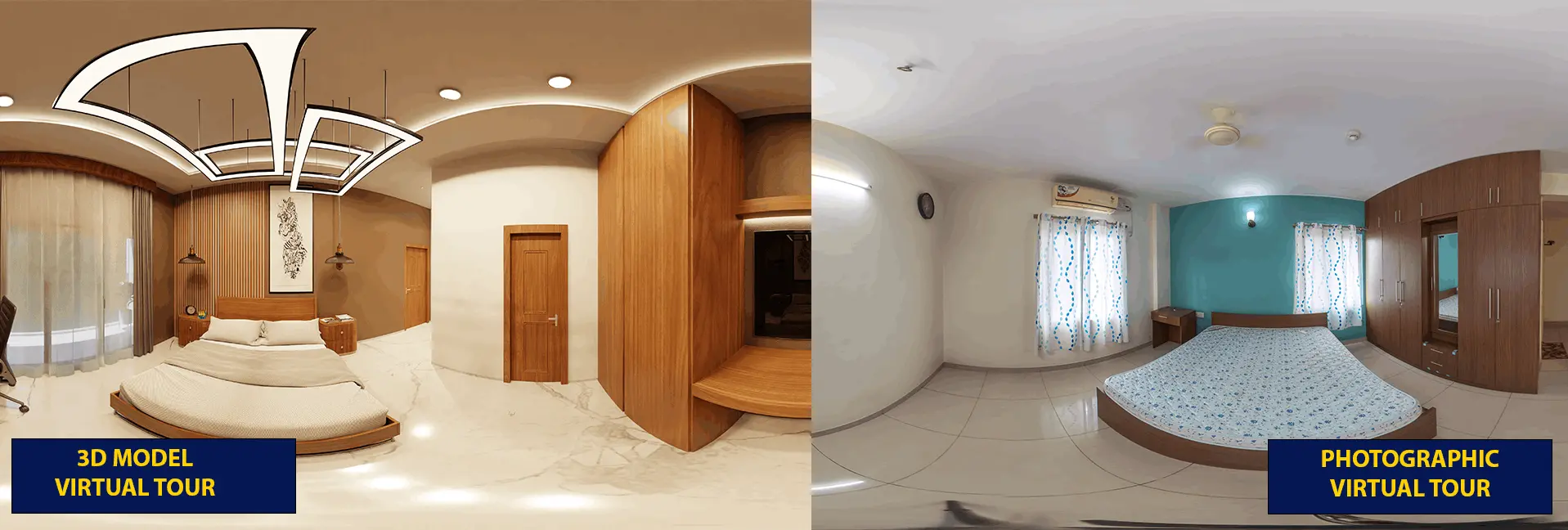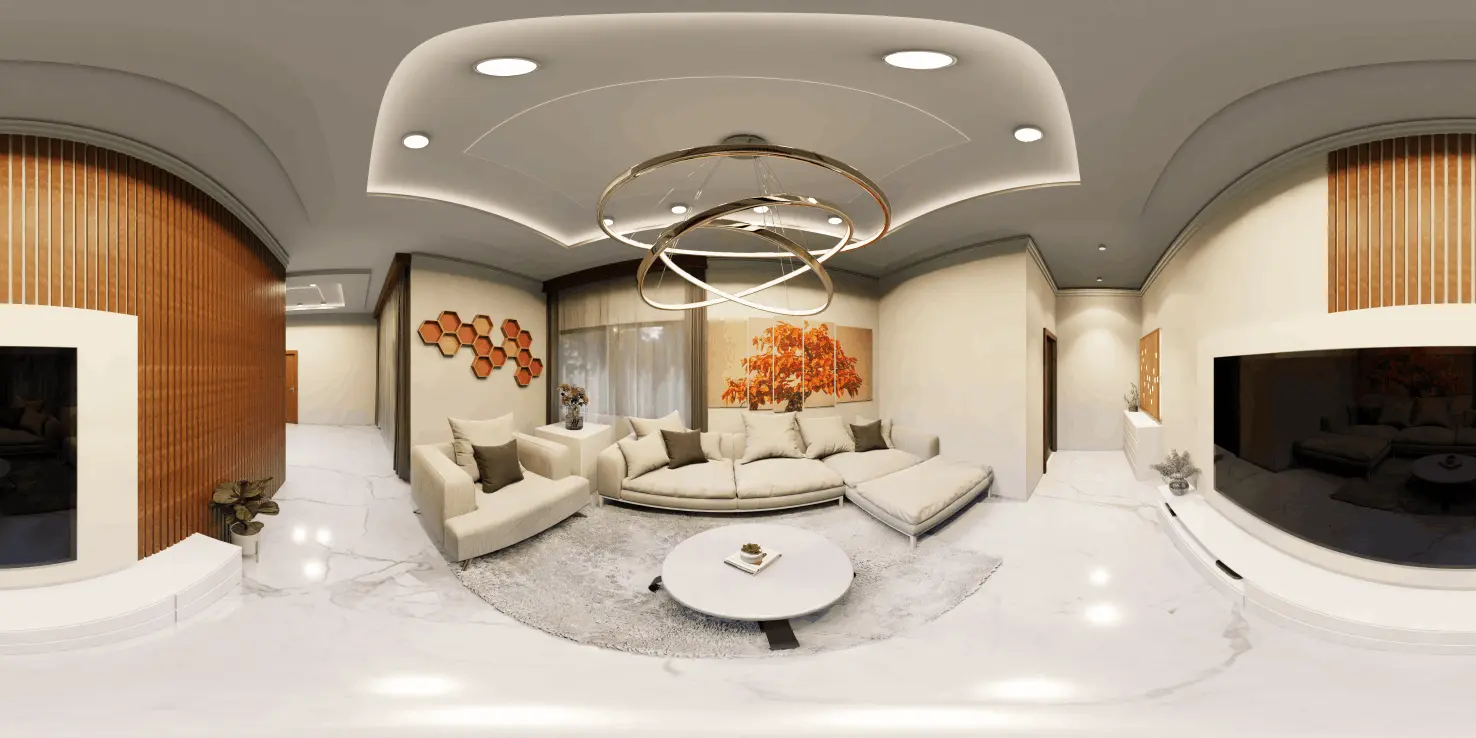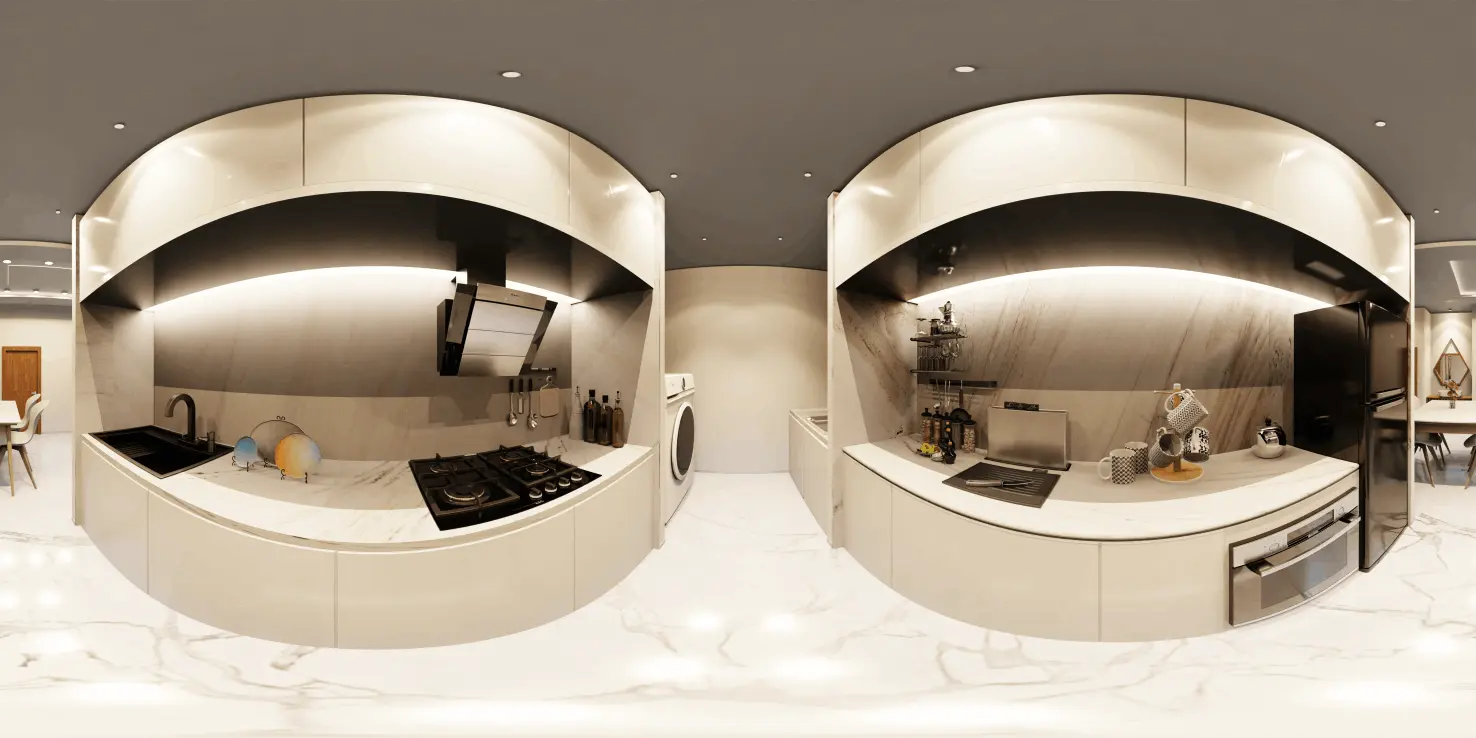3D Modeled Virtual Tours vs 360 Photographed Virtual Tours


In the rapidly evolving world of real estate marketing, the tools and techniques used to showcase properties can significantly impact the success of a sale. Two of the most effective methods for presenting properties are 3D modeled virtual tours and 360 photographed virtual tours. Each approach offers unique advantages, and the choice between them often depends on various factors, such as the stage of the project, the condition of the property, and the marketing goals. In this blog, we will explore these factors in depth to help real estate developers and agents decide whether to use 3D modeled virtual tours or 360 photographed virtual tours to showcase their properties.

Source: OneToBeam
Before diving into specific scenarios, it’s important to understand what 3D modeled virtual tours and 360 photographed virtual tours entail.
3D Modeled Virtual Tours:
involve creating a digital, three-dimensional representation of a property, which allows potential buyers to explore the space virtually. These tours are generated using 3D models that can depict the property’s exterior, interior, and even potential future renovations or furnishings. The viewer can navigate through the property, experiencing it as if they were physically present, with the ability to interact with various elements, change perspectives, and view different design options.
60 Photographed Virtual Tours:
on the other hand, use a series of 360-degree panoramic photographs taken on-site to create an immersive experience. These photographs are stitched together to form a seamless virtual tour, enabling potential buyers to explore the property by navigating from one 360-degree view to another. This method captures the property as it exists in the real world, providing a highly realistic and immediate representation of the space.
Scenario 1: Marketing a Project in the Planning Stage
When a real estate project is still in the planning or pre-construction stage, 360 photographed virtual tours are not an option since the property does not yet physically exist. This is where 3D modeled virtual tours truly excel.
Faster and Cost-Effective Marketing with 3D Modeled Virtual Tours
For projects in the planning stage, 3D modeled virtual tours offer a faster and more cost-effective way to bring the vision of the property to life. Developers can create detailed 3D models that accurately represent the final product, including architectural details, floor plans, and potential interior designs. These models can then be used to create virtual tours that allow potential buyers to explore the property long before it is completed.
The ability to market a property before construction begins is a powerful tool for developers. It allows them to attract investors, secure pre-sales, and generate buzz in the market. By showcasing the property in a fully realized 3D environment, developers can provide potential buyers with a clear and compelling vision of what the completed project will look like. This not only helps in building anticipation but also in gauging interest and making necessary adjustments to the design before construction starts.
Moreover, 3D modeled virtual tours can be more cost-effective than 360 photographed virtual tours in this scenario. While the initial cost of creating a 3D model might seem high, it eliminates the need for repeated photoshoots as the project progresses. Changes to the design can be easily updated in the 3D model, providing a flexible and long-lasting marketing tool that can be used throughout the entire development process.
Scenario 2: Marketing a Built Property
Once a property has been built, the choice between a 3D modeled virtual tour and a 360 photographed virtual tour depends largely on the condition of the property and the marketing objectives.
Well-Maintained Properties: The Case for 360 Photographed Virtual Tours
If the property is well-maintained, a 360 photographed virtual tour is often the preferred method for showcasing it. High-quality 360-degree photographs can capture the property’s best features, from its architectural design to the surrounding landscape. This type of virtual tour provides a highly realistic experience, allowing potential buyers to see the property exactly as it is.
In a well-maintained property, the details matter. The clarity of a 360 photograph, the play of natural light through windows, and the way a space is staged can all contribute to a strong visual appeal. A 360 photographed virtual tour can enhance these aspects, ensuring that each panoramic view highlights the property’s strengths.
Additionally, 360 photographed virtual tours can be produced relatively quickly when dealing with a ready-built property. A photoshoot can be completed in a matter of hours or days, and the virtual tour can be assembled and made available to potential buyers soon after. This speed can be crucial in a fast-moving real estate market where timing is everything.
Poorly Maintained Properties: The Advantage of 3D Modeled Virtual Tours
On the other hand, if a property is not in optimal condition—perhaps it’s outdated, in need of repair, or simply lacks aesthetic appeal—a 3D modeled virtual tour might be the better choice. A 360 photographed virtual tour would capture the property as it is, potentially highlighting its flaws and making it less attractive to potential buyers. In contrast, a 3D modeled virtual tour offers the ability to present the property in its best light, regardless of its current physical state.
With 3D modeling, you can create a virtual version of the property that is pristine and perfect. You can remove signs of wear and tear, update outdated features, and even suggest renovations that could enhance the property’s value. This allows potential buyers to see the property’s potential rather than its current shortcomings. In essence, 3D modeled virtual tours can transform a less-than-ideal property into a highly desirable one, opening up possibilities that 360 photographed virtual tours cannot.
Scenario 3: Showcasing the Property ‘As Is’ vs. Projecting Future Possibilities
Another key consideration when choosing between a 3D modeled virtual tour and a 360 photographed virtual tour is whether you want to showcase the property ‘as is’ or demonstrate how it could look with improvements, such as interior renovations or different staging.
360 Photographed Virtual Tours for the ‘As Is’ Showcase
A 360 photographed virtual tour is ideal when the goal is to present the property exactly as it is. This is often the case for properties that are move-in ready or those with distinctive architectural features that need no enhancement. For example, a historic home with original details or a modern condo with sleek, minimalist design might benefit from a virtual tour that captures the real-world textures, materials, and light.
The strength of a 360 photographed virtual tour lies in its ability to depict reality. It allows potential buyers to see the property in its true form, helping them make decisions based on what they can immediately expect. This can be particularly important for buyers who value authenticity and want to see exactly what they are getting.

Source: OneToBeam
However, when the goal is to show how a property could look after certain changes—such as a renovation, new interior design, or different staging—a 3D modeled virtual tour offers unparalleled flexibility. With 3D models, you can easily visualize different scenarios without physically altering the property. This is particularly useful in marketing properties that might be outdated or in need of significant cosmetic changes.
For example, if a property currently has an older, outdated kitchen, a 3D model can show how the space could be transformed with modern fixtures, new cabinetry, and updated appliances. This allows potential buyers to see the property’s future potential, making it easier for them to envision themselves in the space and understand the value of making such improvements.
Moreover, 3D modeled virtual tours can cater to a buyer’s specific tastes by showing customizable options. For instance, different interior styles—such as contemporary, rustic, or industrial—can be applied to the same space, allowing buyers to choose the style that best fits their preferences. This level of personalization is difficult to achieve with 360 photographed virtual tours alone.
### Scenario 4: The Possibilities of Adding Furniture to 3D Modeled Virtual Tours
One of the most significant advantages of 3D modeled virtual tours is the ability to add virtual furniture and decor to the model, creating a fully staged property without the need for physical furniture. This capability opens up a range of possibilities for real estate marketing.